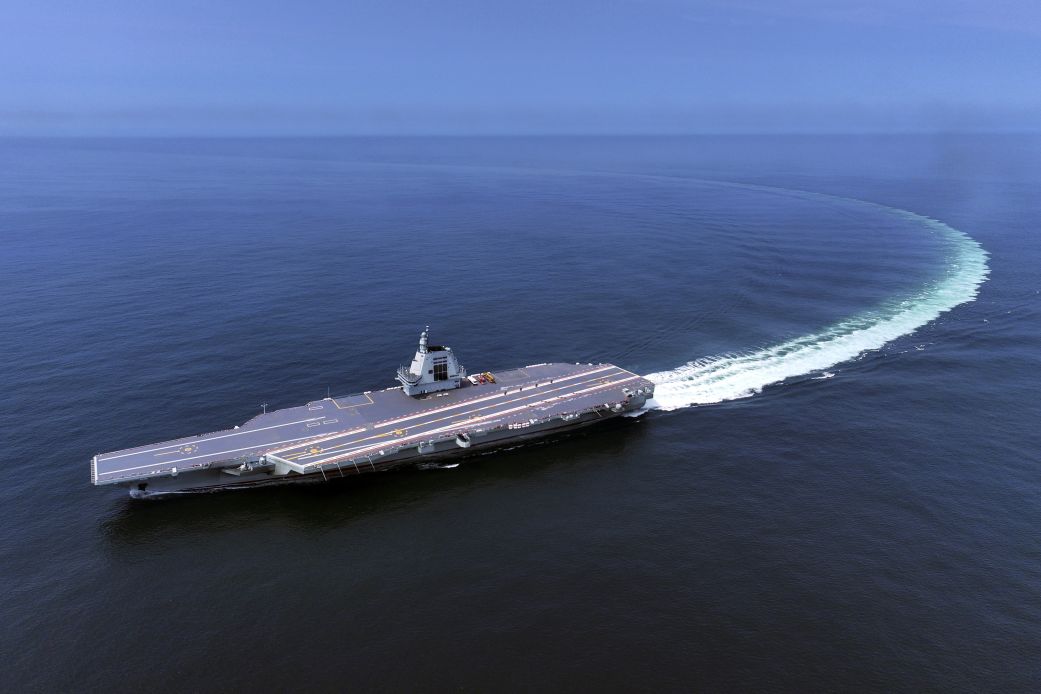
China has officially commissioned its newest and most advanced aircraft carrier, the Fujian, marking a major milestone in its bid to transform the world’s largest navy into a true global force.
State media reported that President Xi Jinping attended the commissioning ceremony on Hainan Island, underscoring the ship’s political and strategic importance. The Fujian is China’s third aircraft carrier and the first fully designed and built domestically, a significant leap in its long-term plan to create a “world-class” military by mid-century.
A Leap in Technology and Power Projection, Unlike its predecessors, the Liaoning and Shandong, which rely on older Soviet designs, the Fujian features an electromagnetic catapult launch system similar to the US Navy’s cutting-edge Ford-class carriers. This system allows for faster, more efficient aircraft launches and supports heavier jets such as the J-35 stealth fighter, J-15T, and the KJ-600 early warning aircraft expanding the reach of China’s carrier-based air power far beyond its shores.
Experts say the Fujian will enable China to project power deep into the Indo-Pacific, including areas around Guam and the Second Island Chain, long dominated by US forces. “Carriers are key to Chinese leadership’s vision of China as a great power with a blue-water navy,” said Greg Poling of the Center for Strategic and International Studies.
Strategic Goals and Global Ambitions, China’s naval strategy has evolved from coastal defense to blue-water operations, with ambitions to safeguard its overseas interests and challenge US influence in critical sea lanes. According to military analysts, Beijing aims to build a force capable of deterring foreign intervention in hotspots such as Taiwan while expanding its presence across the South China Sea, East China Sea, and beyond.
“China’s carriers cannot just operate near home; they must operate in distant oceans and far seas,” said Hong Kong-based expert Song Zhongping. “China is a great power and our overseas interests span the globe; we need to be globally present.”
Still Behind the US, But Closing the Gap Despite its progress, China still trails the US Navy, which operates 11 nuclear-powered carriers. China’s three carriers are conventionally powered, limiting their operational range. The US also maintains a far larger network of overseas bases and more advanced supporting fleets, including destroyers, cruisers, and nuclear submarines.
Even so, analysts say China is rapidly narrowing the gap. Its shipyards are among the busiest in the world, producing new carriers, submarines, and missile destroyers at an unprecedented pace. Reports suggest a nuclear-powered carrier is already in development.
A Symbol of Xi’s Military Modernization Drive. The Fujian stands as a symbol of Xi Jinping’s sweeping military modernization, aimed at building a combat-ready, globally capable force by 2035. Recent military parades and satellite imagery highlight China’s growing arsenal, including hypersonic missiles, electronic warfare systems, and advanced drones.
However, experts caution that equipment alone does not equal readiness. “It is possible that China’s capabilities are overstated, as real-world operational readiness lags behind its showcased arsenal,” said Singapore-based analyst Tang Meng Kit.
Expanding Influence, Growing Tensions. The commissioning of the Fujian signals Beijing’s determination to assert itself as a global maritime power, capable of protecting its interests far beyond Asia. But it also raises tensions with the United States and its allies, who view China’s expanding military reach as a challenge to the existing international order.
With the Fujian, China is now one step closer to realizing its goal of a modern navy capable of shaping global security dynamics and redefining power in the Indo-Pacific.
Erizia Rubyjeana



